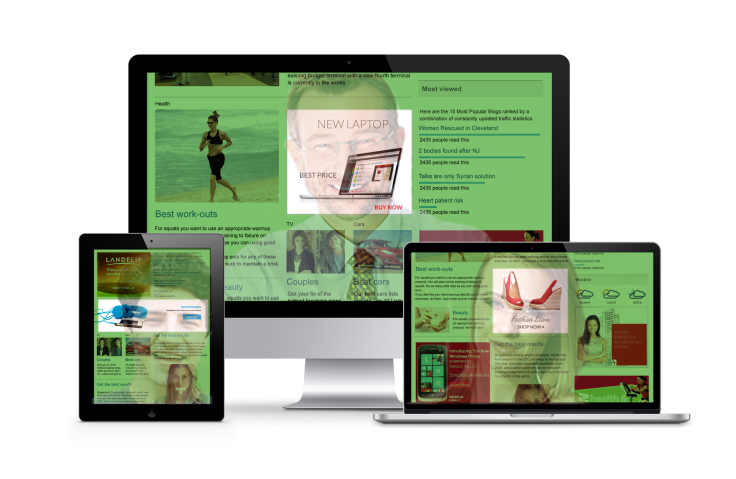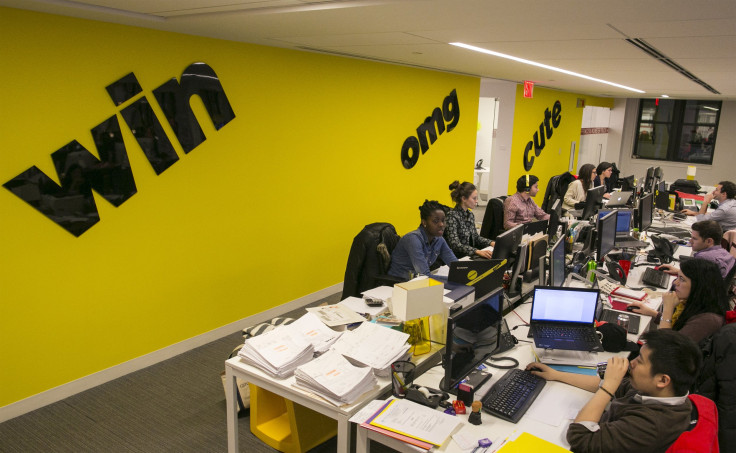What’s Really Killing Digital Media: The Tyranny Of The Impression

All happy media companies are alike, but each unhappy digital media company is unhappy for exactly the same reason. After two decades of selling its ad space using metrics and currency borrowed from magazines and television, the digital publishing world has been distorted and perverted so badly that everybody in the industry is facing an existential crisis.
In the last month alone, a disputed report that BuzzFeed had missed its revenue targets set off shockwaves; Yahoo, which is about to be sold for a small fraction of what it would have fetched eight years ago, posted a $99 million operating loss, showing a decline in ad prices sold; and three days after it shot down a report that layoffs were imminent, the New York Times admitted it would shutter its press operation in Paris to free up more resources for its digital operations. This publication is hardly immune: Earlier this year, International Business Times laid off more than a dozen people.
While all of these companies differ in important ways, their problems are all rooted in a deeply entrenched issue: Digital publishing is built on ad sales based on impressions, and impressions are a terrible currency for selling advertising on the internet.
That’s because when digital publishers sell ads on impressions, all written content is valued equally. A lengthy New York Times expose is no more or less valuable than a blog post crammed with someone else’s Vines. That makes producing high-quality, expensive content a foolish business proposition, especially in a world where more than 72 hours of video, 204 million emails, and 277,000 tweets are published every minute.
That’s also why a growing coalition of publishers and advertisers, especially those who make high-quality stuff, want to ditch the impression altogether. Rather than try to sell ads using metrics that reward lots of clicks, these publishers, and a number of marketers, want to start selling their ads on something very different: time.
“The only way you can actually look at the amount of value someone's placed on content is how much time they're spending with it,” said Brendan Spain, the U.S. commercial director of the Financial Times, one of a growing number of publishers that has begun selling ads using time-based currency; it uses cost per hour.
Spain and the FT lead a working group of 30 publishers, marketers and technology companies that is trying to build support for the idea of selling ads using time-based currencies. It launched the working group shortly after starting to see success selling the ads on its own. Separately, a large number of legacy publishers, including Time Inc., Hearst and Condé Nast, have begun selling larger chunks of their digital inventory based on how long they’re viewed in an advertising network run by Webspectator.
Making the move from impressions to time spent would require dismantling, or at least abandoning, 20 years of inertia and billions of dollars in infrastructure built to transact on impressions. Getting the industry to agree on any kind of standard, especially a standard that could further upend the business, would be a mammoth undertaking. In order for advertising to work, it has to scale. And for it to scale, it needs standards and currencies. The ones that currently exist are meant to measure visits, no matter how short.
And even if that happens, time spent is still a kind of proxy for the thing that marketers really want, which is readers’ attention. “It is very hard, without elaborate and expensive neuroscience, to measure attention,” said Sherrill Mane, senior vice president at the Interactive Advertising Bureau. "Time spent," she noted, is the best available proxy.
But because of the promise that transacting on time offers, more and more people are taking notice. “It rewards long-form, quality journalism,” the FT’s U.S. commercial director Spain said. “Not how well you can get somebody to spend one second on something.”
For more than a decade, the digital media business has been dealing with an oversupply problem: There are simply too many advertising impressions to buy and sell. In January, comScore tracked 3.8 trillion web pages, loaded with even more ads, served worldwide on desktop computers, an eye-popping number that barely tells the story of how much content was viewed online. That number does not count sites loaded on mobile devices, for example, nor does it account for the tens of millions of ads served on social networks like Twitter (Facebook traffic is included).
Yet as big as that number is, the disturbing reality is that more than half of that inventory is worthless. According to research conducted by comScore, just 48 percent of the ad impressions served in the U.S. during the fourth quarter of last year were viewable. Forty-five percent of the impressions were not, either because the ads were too small, or they were hidden from visitors’ view, or they flashed across readers’ screens too quickly to be read; the remaining 7 percent of ads were served to nonhuman website visitors.
“There's a tremendous amount of waste in online advertising,” said Ben Winkler, the chief innovation officer at the media agency OMD.
Why would any media company bother to sell an advertising unit like that? And why would any advertiser bother to buy one?
Things didn’t get this dysfunctional overnight. But they started from what turned out to be a flawed premise. Twenty years ago, when web display ads first hit the market, publishers and advertising companies like Yahoo decided that they would sell display inventory per thousand impressions. This was the same currency used by advertisers in traditional media spaces like newspapers and magazines, and the first banner ad sold on Wired with a $20 CPM, or cost per mille (thousand).
Whether CPM was the right currency for the web, a medium that, even in the ‘90s, was very different from the inside of a newspaper or the middle of a television show, didn’t matter. “That’s what the advertisers were willing to pay,” said Andy Batkin, the chief revenue officer of Webspectator and a consultant who helped build Yahoo’s display advertising business. “We weren’t going to argue.”

But CPM turned out to be the wrong currency for the Internet. If Wired wants to create more ad inventory to sell in its magazine, it needs to print another page every month. If Fox wants to sell more spots during “Empire,” it would either have to make the show, or all the other ads it sells, shorter. While there’s no shortage of magazines to read or shows to watch, there is a dimension of scarcity implicit in those ads.
“In the magazine world, you can’t put five full-page ads on one page,” said Dave Morgan, the founder of Simulmedia and former head of global advertising strategy at AOL.
On the web, no such strictures exist, and so as publishers churned out more content, and the internet became a daily part of everybody’s lives, the value of an impression began to plummet. Today, Batkin said, that same banner ad likely fetches $2 or $3 per thousand views.
As they came to grips with this problem, media companies tried to grow their way out of it, first by producing more scale. Industry-watchers oohed and ahhed as Arianna Huffington talked an army of people into writing for free, then built a staff that churned out more than 1,200 pieces of content a day. Buzzfeed lapped up adulation for its exploding watermelon, but the reality is it built itself up by spending almost as much money buying social media traffic as it did on editorial, ultimately building itself into a web video colossus that generates more than 3 billion video views every month.
The relentless pursuit of scale has publishers ceding control of distribution to platforms like Facebook, which has shown an ability to put content in front of the right people, but also has a history of changing the rules and reach of content on its platform, often without explanation.
Separately, numerous media companies tried to solve the CPM problem by producing something else altogether. Vice decided to deepen its relationship with advertisers by opening up its very own advertising agency, designed to help brands build their own edgy creative and experiences. Buzzfeed threw in its lot with sponsored content, or advertisements meant to look and feel like the content normally created by a publisher. Gawker Media makes up to a third of its revenues from sponsored content and e-commerce, publishing sponsored posts that include links to products. If that post initiates a sale, Gawker gets a cut.
The problem with all of these strategies, however, is that they're labor-intensive, and do not scale in a way that allows brands to pour budgets into tonnage of impressions. “The main reason these guys are trying to move away from impressions is because they're not making money,” said Charlie Fiordalis, the chief digital officer at Media Storm.

The FT announced it would start transacting based on time in 2014, and since then it’s executed more than 30 advertising campaigns for some 24 advertisers, including blue-chip brands like Microsoft and BP. At first, the FT was only closing time-based deals with advertisers it already had relationships with, but in the last three months, it’s started convincing brands it had never worked with before to sign up.
It’s also launched its working group, which counts publishers including Fox News and advertising technology companies like Moat, which serves 70 percent of the top publishers in the U.S.
“We see a lot of excitement in the market on both sides around metrics like time,” Moat co-founder and CEO Jonah Goodhart said. “Companies [that produce expensive content] are strongly incentivized not to live in this world for much longer.”
But switching the coin of the realm will be easier said than done. More than $32 billion will be spent on display advertising online in 2016, according to eMarketer, and building support for a new way to spend it will take time. “It's hard to plan media based on the total amount of time you want spent with your advertising,” OMD CIO Winkler said. “It's not intuitive, and the tools aren't designed for it.”
Beyond infrastructure problems, there is the issue of competing priorities. While publishers like the FT might like transacting on time, plenty of other publishers, especially those that have built themselves to deliver quick-hitting, simpler content, won’t want to move in this direction.
“It is very hard, without elaborate and expensive neuroscience, to measure attention.”
That’s one major reason it took an industrywide coalition nearly five years simply to agree on a standard for when a digital advertisement qualified as “viewable,” and therefore worth buying.
What they settled on last year – 50 percent of an ad’s pixels in view, for at least one second – is regarded by some industry players as an imperfect starting point. And getting those same interests to agree on a similar baseline for a time-based advertising currency could be even harder.
But because time spent with the ad is part of the industry’s new viewability standard, many in the media believe a time-based currency is an inevitability. And yet when it comes to how much time, the devil is in the details. “Is one second long enough? What is three seconds worth? What about five?" said Mike McLeod, a director of advertising services for the digital arm of the PGA Tour.
In February, Interpublic Group’s Media Lab published research which found the amount of time a reader spent with an ad is a better indicator of an ad’s effectiveness than the number of pixels she sees.
Mapping out all of the effects of a switch to time spent would be difficult. But every source contacted for this story agreed on one thing: A switch to time-based metrics could wind up erasing, or at least deeply devaluing, some of the click-bait tactics that some digital publishers have grabbed onto in recent years. “For our partners, this is a good thing, because it separates them from the chaff,” OMD CIO Winkler said. “There's plenty of chaff on the internet.”
It could also wind up hurting publishers and networks that try to sell audiences with few details about who that audience is and how it experiences your content. Snapchat investors, you’ve been warned.
© Copyright IBTimes 2025. All rights reserved.





















